Welcome to our free classical music site

Do you write about classical music? Are you a blogger? Want to team up with Classical Connect? Send us a message, let's talk!

Do you write about classical music? Are you a blogger? Want to team up with Classical Connect? Send us a message, let's talk!
This Week in Classical Music: August 15, 2022. Coleridge-Taylor and Lili Boulanger. Two composers, whose music has probably been performed more often in the last two years than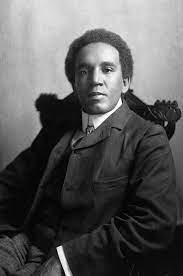 during all the years since it has been written, were born this week: Samuel Coleridge-Taylor, a composer of Afro-British origins, and Lili Boulanger, a French female composer. Coleridge-Taylor was born in London on August 15th of 1875. His mother was English, his father – a descendant of freed American slaves who settled in Sierra Leone. His father returned to Africa before Samuel was born, and his mother named him Samuel Coleridge Taylor after the Romantic poet Samuel Taylor Coleridge. They lived with his mother’s father in a family that loved and played music, and it was recognized early on that Samuel was musically talented. Later, he was helped by Edward Elgar, who recommended him to the “Three Choirs Festival,” a music festival which rotates among three cathedrals, Worcester, Gloucester, and Hereford and takes its name from the choirs of these cathedrals (the festival is still going strong today). In 1898-1900 Coleridge-Taylor composed three cantatas under the name of The Song of Hiawatha. They became very popular, especially the first part, Hiawatha's Wedding Feast. In 1904 Coleridge-Taylor went on a tour of the United State and was received in the White House by Theodore Roosevelt. He toured the US and Canada in 1906 and the US again in 1910, visiting New York, Boston, Detroit, St-Louis, and other major cities. For many years Coleridge-Taylor was the conductor of the Handel Society of London. He died September 1st of 1912 of pneumonia, at just 37 years old. Here’s Coleridge-Taylor’s Hiawatha's Wedding Feast. Malcolm Sargent conducts the Royal Choral Society and the Philharmonia Orchestra. While it’s not clear to us why Coleridge-Taylor is sometimes called "the African Mahler" we sure are glad that his piece is not considered a cultural appropriation.
during all the years since it has been written, were born this week: Samuel Coleridge-Taylor, a composer of Afro-British origins, and Lili Boulanger, a French female composer. Coleridge-Taylor was born in London on August 15th of 1875. His mother was English, his father – a descendant of freed American slaves who settled in Sierra Leone. His father returned to Africa before Samuel was born, and his mother named him Samuel Coleridge Taylor after the Romantic poet Samuel Taylor Coleridge. They lived with his mother’s father in a family that loved and played music, and it was recognized early on that Samuel was musically talented. Later, he was helped by Edward Elgar, who recommended him to the “Three Choirs Festival,” a music festival which rotates among three cathedrals, Worcester, Gloucester, and Hereford and takes its name from the choirs of these cathedrals (the festival is still going strong today). In 1898-1900 Coleridge-Taylor composed three cantatas under the name of The Song of Hiawatha. They became very popular, especially the first part, Hiawatha's Wedding Feast. In 1904 Coleridge-Taylor went on a tour of the United State and was received in the White House by Theodore Roosevelt. He toured the US and Canada in 1906 and the US again in 1910, visiting New York, Boston, Detroit, St-Louis, and other major cities. For many years Coleridge-Taylor was the conductor of the Handel Society of London. He died September 1st of 1912 of pneumonia, at just 37 years old. Here’s Coleridge-Taylor’s Hiawatha's Wedding Feast. Malcolm Sargent conducts the Royal Choral Society and the Philharmonia Orchestra. While it’s not clear to us why Coleridge-Taylor is sometimes called "the African Mahler" we sure are glad that his piece is not considered a cultural appropriation.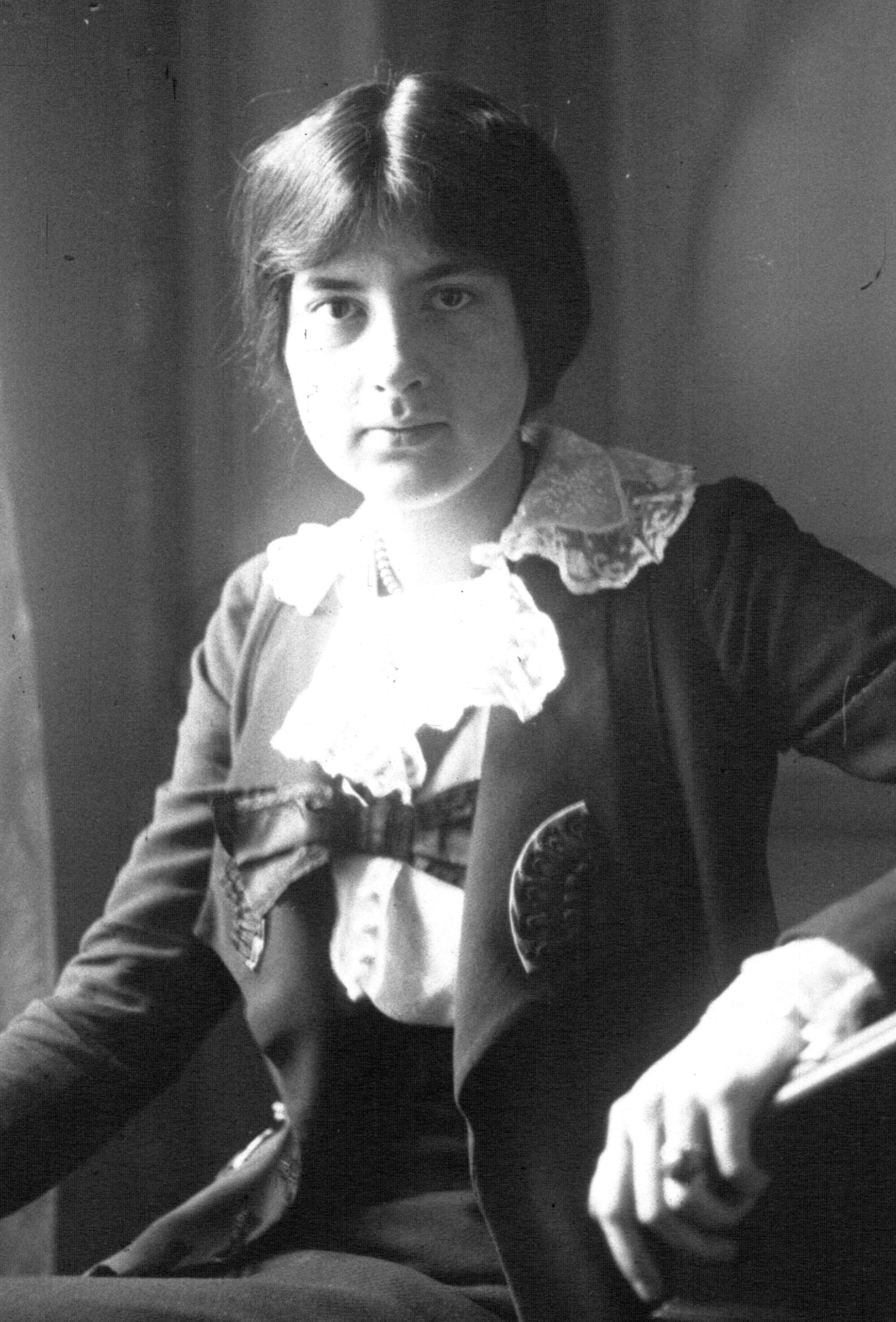
Lili Boulanger’s life was even shorter than Coleridge-Taylor’s: she died of tuberculosis at the age of 24. Boulanger, like Coleridge-Taylor, was also born (on August 21st of 1893) into a musical family, but of a much higher social status: her father, Ernest Boulanger, was a noted pianist, composer and conductor who counted Ambroise Thomas, Charles Gounod and Gabriel Fauré among his friends. Lili’s mother was born in St.-Petersburg, probably an illegitimate daughter of a Russian aristocrat; she studied singing in the St.-Petersburg Conservatory, moved to Paris at the age of 20, and soon became Ernest’s wife (he was then 62, she was 21). When Lili was two years old, Fauré discovered that she had perfect pitch. Also at the age of two, Lili got ill with pneumonia, which compromised her immune system for the rest of her short life. She attended some classes at the Paris Conservatoire (her frail health didn’t allow her to attend them all), and in 1913 won the coveted Prix de Rome for composition with the cantata Faust et Hélène, the first woman to do so (her father won it in 1835 but her talented sister Nadia who would become one of the most influential music teachers of the 20th century, failed to do so, coming in second; Nadia did win several First prizes, though). Lili went to Rome but return to Paris soon after as WWI broke out. She went back in 1916 for several months; in Rome she started working on a five-act opera La princesse Maleine and several other pieces but again returned to Paris, this time because her health was deteriorating. Her last piece, Pie Jesu for soprano, string quartet, harp and organ, was dedicated to her sister Nadia. Lile died on March 15, 1918 (Claude Debussy died ten days later). Here’s Pie Jesu, performed by the soprano Isabelle Sabrié, Eric Lebrun (organ), Francis Pierre (harp), and the strings.Permalink
This Week in Classical Music: August 8, 2022. Seven composers. Yes, that many, all interesting, none of them great, at least in our opinion, and three of them French. Cécile Chaminade, one of the few women composers of the 19th century, and André Jolivet were born on August 8th and both in Paris, Chaminade in 1857, Jolivet in 1905. Reynaldo Hahn, a songwriter and Proust’s friend,was born on August 9th of 1874 in Caracas but spent his adult life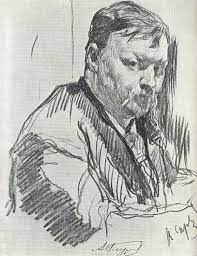 in France. You can read about all three here.
in France. You can read about all three here.
The Russian composer Alexander Glazunov was born on August 10th of 1865. He wrote a wonderful Violin concerto and a very popular ballet, Raymonda. He also wrote eight complete symphonies (he never finished his ninth), two piano concertos and much more. Outside of Russia very little of this music is performed or broadcast. But Glazonov was very important as a public cultural figure and a supporter of classical music in Russia and the early Soviet Union. He became the Director of the St-Petersburg’s Conservatory in 1905 and served in that position until 1928, one of the few administrators who wasn’t fired after the revolution of 1917, most likely because Glazunov was friends with Anatoly Lunacharsky, Soviet Union’s first minister of education and culture. In 1928 Glazunov was invited to Vienna to a composer’s competition, organized to commemorate the 100th anniversary of Schubert’s death. He was allowed to go (again thanks to Lunacharsky) and decided not to return to Russia. He eventually settled in Paris and died in 1936. Here’s a typical Glazunov’s piece, a symphonic poem Sten’ka Razin, which extensively uses the theme from the Song of the Volga Boatmen (actually, barge haulers, who pulled barges by a rope). In Russian this song is called Эй, ухнем, usually and inaccurately translated as Yo, heave-ho!. The song was made famously by the great Russian bass Feodor Shalyapin. The American bass Paul Robeson also had it in his repertoire and in 1941 Glenn Miller arranged the song for his orchestra – it became a hit. Here is Chaliapin’s recording with an unnamed orchestra from 1923 – the quality isn’t high, but Chaliapin’s voice comes through.
Heinrich Ignaz Biber, an Austrian-Bohemian composer, was born on August 12th of 1644. Read about him (and more on Jolivet) here. On the same day but 52 years later, in 1696, the English composer Maurice Greene was born in London. He’s the author of some of the most popular pieces of English church music, the anthems Hearken Unto Me, Ye Holy Children (here) and Lord, let me know mine end (here).
We have to admit that sometimes we do not understand the music of Kaikhosru Shapurji Sorabji, our seventh composer, especially his longer works. Sorabji, whose father was a Parsi from Bombay, was born on August 14th of 1892. We last wrote an entry about him nine years ago (here) and were reticent to come back to the topic. That said, his Piano Sonata no. 1, from 1919, is quite accessible, lasts only 22 minutes and has a reasonably developed form. Here it is, brilliantly performed by Marc-André Hamelin in a 1990 recording.Permalink
This Week in Classical Music: August 8, 2022. Seven composers. Yes, that many, all interesting, none of them great, at least in our opinion, and three of them French. Cécile Chaminade, one of the few women composers of the 19th century, and André Jolivet were born on August 8th and both in Paris, Chaminade in 1857, Jolivet in 1905. Reynaldo Hahn, a songwriter and Proust’s friend,was born on August 9th of 1874 in Caracas but spent his adult life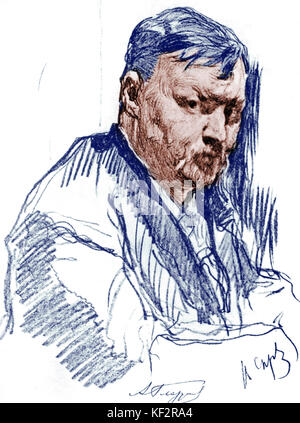 in France. You can read about all three here.
in France. You can read about all three here.
The Russian composer Alexander Glazunov was born on August 10th of 1865. He wrote a wonderful Violin concerto and a very popular ballet, Raymonda. He also wrote eight complete symphonies (he never finished his ninth), two piano concertos and much more. Outside of Russia very little of this music is performed or broadcast. But Glazonov was very important as a public cultural figure and a supporter of classical music in Russia and the early Soviet Union. He became the Director of the St-Petersburg’s Conservatory in 1905 and served in that position until 1928, one of the few administrators who wasn’t fired after the revolution of 1917, most likely because Glazunov was friends with Anatoly Lunacharsky, Soviet Union’s first minister of education and culture. In 1928 Glazunov was invited to Vienna to a composer’s competition, organized to commemorate the 100th anniversary of Schubert’s death. He was allowed to go (again thanks to Lunacharsky) and decided not to return to Russia. He eventually settled in Paris and died in 1936. Here’s a typical Glazunov’s piece, a symphonic poem Sten’ka Razin, which extensively uses the theme from the Song of the Volga Boatmen (actually, barge haulers, who pulled barges by a rope). In Russian this song is called Эй, ухнем, usually and inaccurately translated as Yo, heave-ho!. The song was made famously by the great Russian bass Feodor Shalyapin. The American bass Paul Robeson also had it in his repertoire and in 1941 Glenn Miller arranged the song for his orchestra – it became a hit. Here is Chaliapin’s recording with an unnamed orchestra from 1923 – the quality isn’t high, but Chaliapin’s voice comes through.
Heinrich Ignaz Biber, an Austrian-Bohemian composer, was born on August 12th of 1644. Read about him (and more on Jolivet) here. On the same day but 52 years later, in 1696, the English composer Maurice Greene was born in London. He’s the author of some of the most popular pieces of English church music, the anthems Hearken Unto Me, Ye Holy Children (here) and Lord, let me know mine end (here).
We have to admit that sometimes we do not understand the music of Kaikhosru Shapurji Sorabji, our seventh composer, especially his longer works. Sorabji, whose father was a Parsi from Bombay, was born on August 14th of 1892. We last wrote an entry about him nine years ago (here) and were reticent to come back to the topic. That said, his Piano Sonata no. 1, from 1919, is quite accessible, lasts only 22 minutes and has a reasonably developed form. Here it is, brilliantly performed by Marc-André Hamelin in a 1990 recording.Permalink
This Week in Classical Music: August 1, 2022. Hans Rott, Leonel Power. Today is the birthday of the Austrian composer Hans Rott; he was born in Braunhirschengrund, a suburb of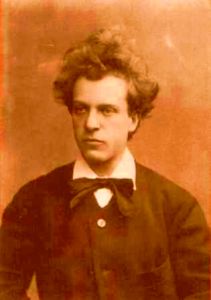 Vienna, in 1858. A composer of obvious talent who lived a short and tragic life, he in a way anticipated Mahler. Both Bruckner and Mahler recognized him as a major talent. We wrote an entry about Rott, you can read it here. It seems that we’re not the only ones fascinated by Rott: his Symphony no. 1, the only one he completed, and some of his other works are being recorded on a regular basis. In the past two years a two-volume CD set was issued by the Capriccio label; it features the Gürzenich Orchestra Cologne, one of the two major Cologne orchestras, under the direction of Christopher Ward and contains practically all of Rott’s symphonic music.
Vienna, in 1858. A composer of obvious talent who lived a short and tragic life, he in a way anticipated Mahler. Both Bruckner and Mahler recognized him as a major talent. We wrote an entry about Rott, you can read it here. It seems that we’re not the only ones fascinated by Rott: his Symphony no. 1, the only one he completed, and some of his other works are being recorded on a regular basis. In the past two years a two-volume CD set was issued by the Capriccio label; it features the Gürzenich Orchestra Cologne, one of the two major Cologne orchestras, under the direction of Christopher Ward and contains practically all of Rott’s symphonic music.
This week is also a putative anniversary of Guillaume Dufay, who, according to some research was born on August 5th of 1397. We’ve written about this very important composer on a number of occasions (for example, here about his extensive travels around Europe). We’ve also written about his contemporary, another Franco-Flemish composer, Gilles Binchois (Dufay and Binchois were born about 25 miles from each other, the former in Beersel, the latter in Mons, both in modern day Belgium). Antoine Busnois ,who was a generation younger, is usually considered the third of the most consequential Franco-Flemish composers of the mid-15th century. The Franco-Flemish school was one of the two dominant music schools of the time, the other being developed in England (notice the absence of the Italians). Two English composers overshadowed the rest in the flourishing music scene: John Dunstaple and Leonel Power. Up till now we were amiss in not addressing Power’s life and music. Power was older than either Dunstaple or Dufay: he was born sometime between 1370 and 1385. There are few records of his life. Power’s name is first mentioned on a list of clerks of the household chapel of Thomas, Duke of Clarence: he’s listed as an instructor of the choristers (Thomas was a brother of Henry V, the great warrior-king of England immortalized by Shakespeare). In 1423 Power was mentioned as being admitted to the fraternity of Christ Church, Canterbury (the Canterbury cathedral). In 1439 Power became master of the choir at the cathedral. Not much else is known about his life. He died at Canterbury on June 5th of 1445. About 40 pieces of music are attributed to Power, many of them represented in the Old Hall Manuscript, a unique document compiled in the first half of the 15th century. We know of about eight of his masses, although two of them could have been written by Dunstaple: the styles of the two composers were similar, what the French called Contenance angloise, or English manner. Power was one of the first composers to create a unified mass cycle. To demonstrate Power’s music, here are two mass sections: Gloria and Credo. Both are performed by the Hilliard Ensemble.Permalink
This Week in Classical Music: July 25, 2022. Dohnányi, Conductor and Composer. Ernst von Dohnányi (Ernő Dohnányi in Hungarian), was born on July 27th of 1877 in Pozsony, now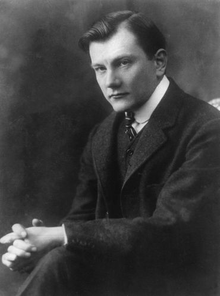 Bratislava, Kingdom of Hungary, then part of the dual monarchy of Austria-Hungary. Ernst von Dohnányi is the German version of his name and how he used to sign his compositions. Dohnányi studied the piano and composition at the Royal National Hungarian Academy of Music (and convinced his friend, Béla Bartók, to join him there). In 1898, one year after he graduated, the conductor Hans Richter took Dohnányi to London where he played Beethoven’s Piano Concerto no. 4 to great acclaim. He was also composing (Brahms liked his Op. 1, a Piano Quintet), and by 1900 the young Dohnányi was acknowledged as the greatest Hungarian pianist-composer since Liszt. He became friends with the famous violinist Joseph Joachim, 46 years his elder; Joachim invited Dohnányi to Berlin, to teach at the Hochschule für Musik. In 1915 Dohnányi returned to Budapest where he embarked on a very ambitious program of reshaping the musical life of Hungary, first as the Director of the Budapest Academy, and then in the position of Music Director of the Budapest Philharmonic Orchestra. He promoted the music of Béla Bartók, Zoltán Kodály, Leo Weiner and other Hungarian composers, and also played extensively, for example, performing all of the piano works of Beethoven, and taught at the Academy. Among his students were Annie Fischer, Georg Solti, Georges Cziffra and many other musicians who later made big careers. In 1934 Dohnányi was again appointed Director of the Academy of Music while keeping his position at the Philharmonic Orchestra.
Bratislava, Kingdom of Hungary, then part of the dual monarchy of Austria-Hungary. Ernst von Dohnányi is the German version of his name and how he used to sign his compositions. Dohnányi studied the piano and composition at the Royal National Hungarian Academy of Music (and convinced his friend, Béla Bartók, to join him there). In 1898, one year after he graduated, the conductor Hans Richter took Dohnányi to London where he played Beethoven’s Piano Concerto no. 4 to great acclaim. He was also composing (Brahms liked his Op. 1, a Piano Quintet), and by 1900 the young Dohnányi was acknowledged as the greatest Hungarian pianist-composer since Liszt. He became friends with the famous violinist Joseph Joachim, 46 years his elder; Joachim invited Dohnányi to Berlin, to teach at the Hochschule für Musik. In 1915 Dohnányi returned to Budapest where he embarked on a very ambitious program of reshaping the musical life of Hungary, first as the Director of the Budapest Academy, and then in the position of Music Director of the Budapest Philharmonic Orchestra. He promoted the music of Béla Bartók, Zoltán Kodály, Leo Weiner and other Hungarian composers, and also played extensively, for example, performing all of the piano works of Beethoven, and taught at the Academy. Among his students were Annie Fischer, Georg Solti, Georges Cziffra and many other musicians who later made big careers. In 1934 Dohnányi was again appointed Director of the Academy of Music while keeping his position at the Philharmonic Orchestra.
These were difficult times in Hungary, which was ruled by Miklós Horthy, an autocrat and semi-fascist. Hungary was anti-Semitic under Horthy, but became murderous once Germany occupied it and replaced Horthy with a “real” fascist, Ferenc Szálasi. 564,000 Jews out of the 825,000 pre-war population perished during the Holocaust. (This history is vividly depicted in a poignant 1999 film Sunshine made by the renowned Hungarian director István Szabó; we highly recommend it). Dohnányi was an anti-Nazi and tried to help Jewish musicians. In 1941, with anti-Semitism gaining steam, he quit the Academy of Music rather than following the demands of anti-Jewish legislation. At the Philharmonic Orchestra he kept all his Jewish musicians till after Germany occupied Hungary in March of 1944 and his position became untenable. He also helped several Jewish musicians to escape Hungary. In November of 1944 Dohnányi moved to Austria, then under the Nazi regime and part of Germany, and that lead to the unfair and unfounded criticism that somehow Dohnányi was pro-Nazi, which haunted him for years. Despite the support and testimonials from his Jewish friends, these rumors made Dohnányi‘s life in Europe difficult and were the reason that Dohnányi emigrated to the US. He settled in Tallahassee and taught at Florida State University. He continued to compose and conduct, and died in New York in February of 1960 while making a recording of Beethoven’s piano sonatas.
As composer, Dohnányi was rather conservative, following the Romantic traditions of the 19th century. Still, his chamber music is of very high quality. Here for example, is his Serenade in C Major for String Trio, Op. 10, from 1902. It’s performed by the Spectrum Concerts Berlin. And here’s is his Konzertstück op.12. János Starker is the soloist, with the Philharmonia Orchestra led by Walter Süsskind in this 1956 recording. As conductor Dohnányi was famous for his interpretation of the music of Béla Bartók, which shows how open-minded Dohnányi was, as the music of his friend was different from his own in every possible way.Permalink
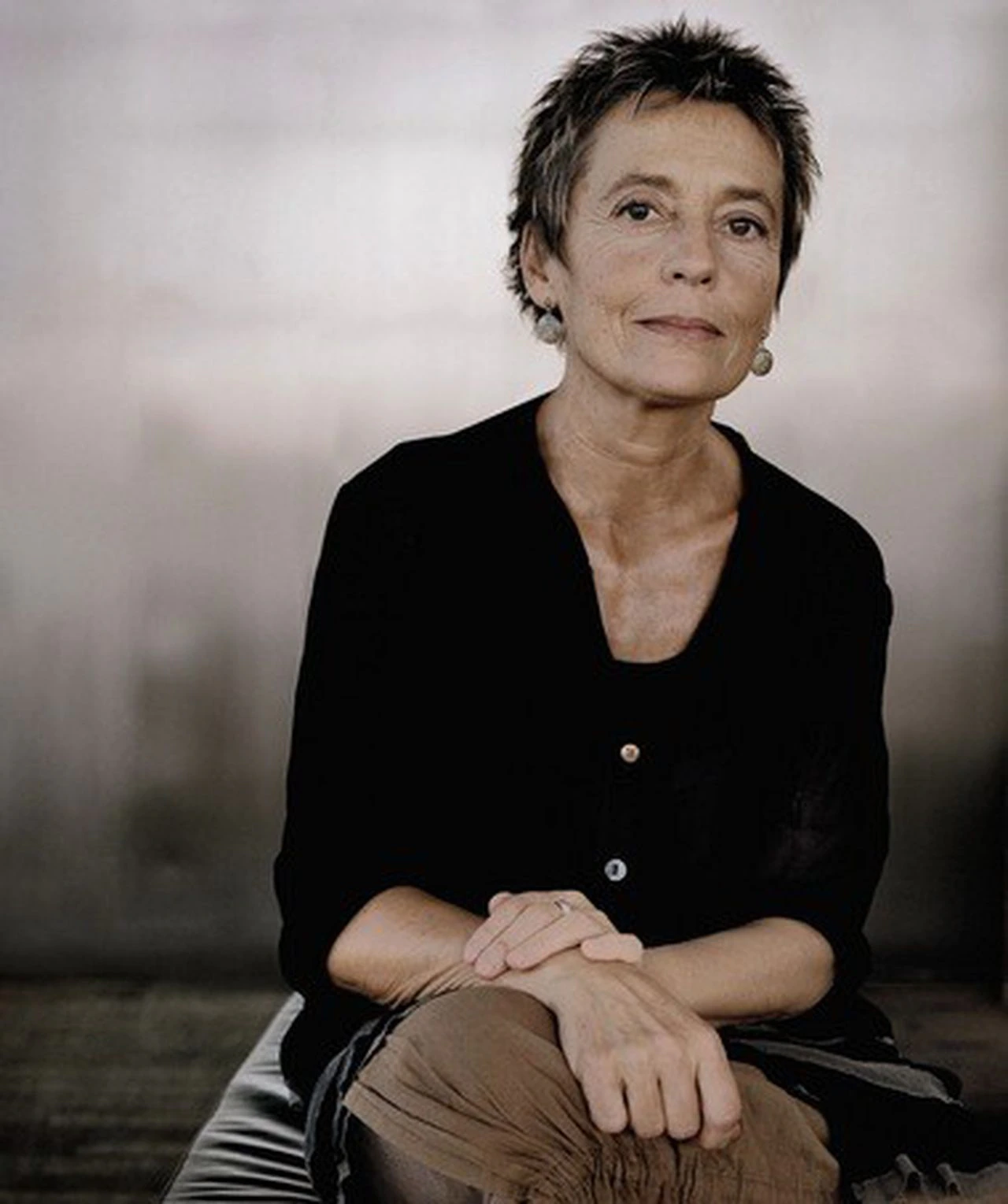
This Week in Classical Music: July 18, 2022. Instrumentalists and Singers. We’ll skip several anniversaries, such as Francesco Cilea’s, his opera Adriana Lecouvreur notwithstanding, even though the title soprano role has been sung by such luminaries as Magda Olivero, Renata Tebaldi, Leyla Gencer, Montserrat Caballé, Renata Scotto, Mirella Freni, Joan Sutherland and Angela Gheorghiu. We’ll also skip Ernest Bloch, a Swiss-Jewish-American composer mostly famous for his Schelomo: Rhapsodie Hébraïque, a large-scale work for cello and orchestra. And we’ll also leave out Adolphe Adam who wrote music for such popular ballets as Giselle and Le corsaire. All three of them were born this week, on July 23rd of 1866, July 24th of 1880 and July 24th of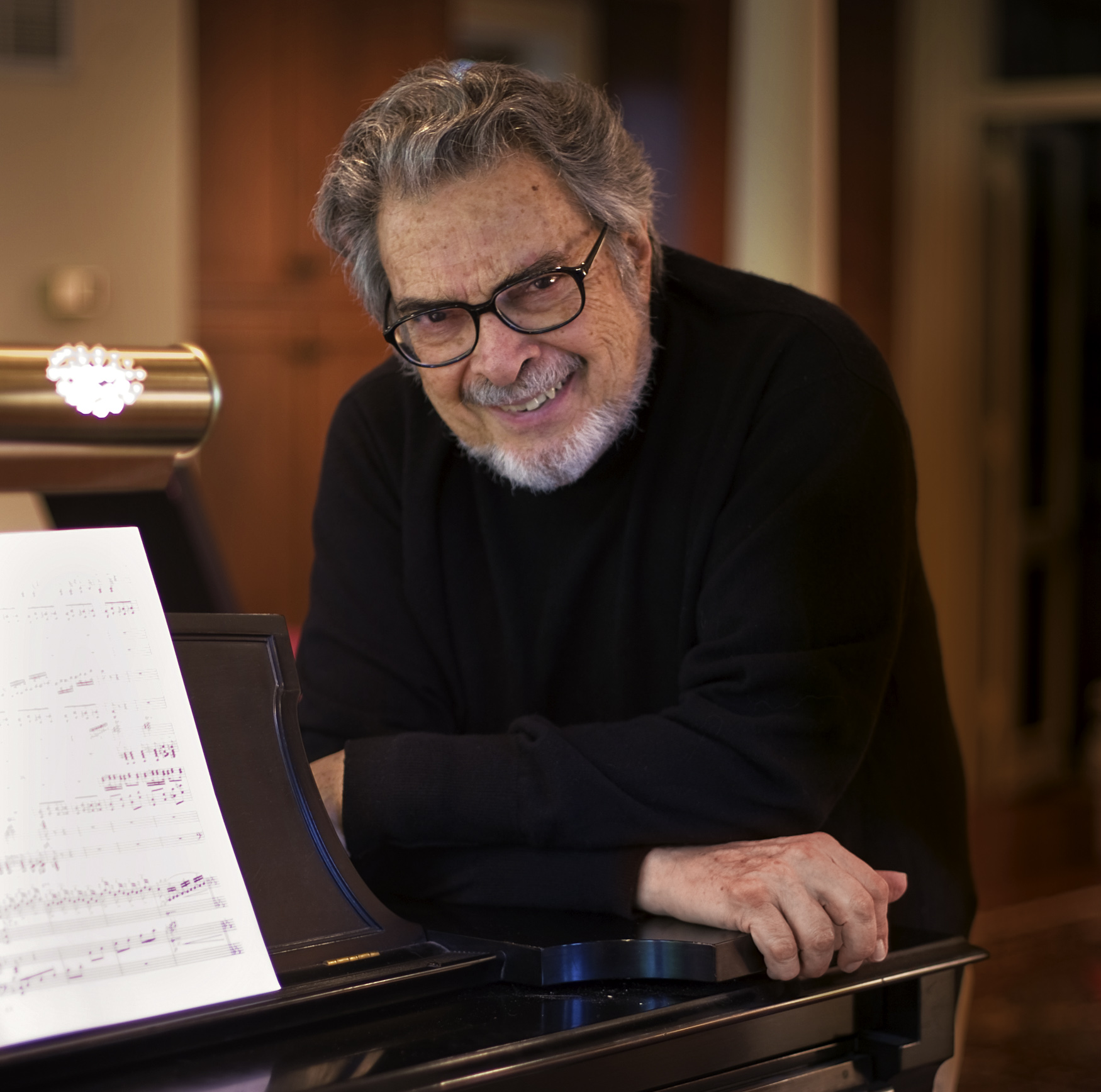 1803 respectively. Instead, we’ll acknowledge several interpreters: the pianists, violinist, and singers.
1803 respectively. Instead, we’ll acknowledge several interpreters: the pianists, violinist, and singers.
First, the pianists. Leon Fleisher was born on July 23rd of 1928. Fleisher lived a long life (he died two years ago) but his phenomenal career was cut short in 1964 by problems in his right hand. He continued playing arepertoire for the left hand while trying to find a cure. In 2004, 40 years after being diagnosed with focal dystonia, he regained some use of his right hand, but not on the level of his early years. For almost 60 years Fleisher taught at the Peabody Conservatory of Music; among his students were André Watts, Yefim Bronfman, Hélène Grimaud, and Louis Lortie. Here’s the famous recording of Brahms’s Second Piano Concerto Fleisher made in 1962. George Szell conducts the Cleveland Orchestra.
The Portuguese pianist Maria João Pires (pronounced “piresh” in Portuguese) was also born on July 23rd, in 1944. She’s an unusual musician in that she clearly tries to avoid the demands of a virtuoso concert pianist’s life: hundreds of concerts, media presentations and such. Her career is punctuated by pauses, as when she stopped playing in public from 1978 to 1982. Pires’s repertoire is broad, but she seems to be especially close to the music of Mozart and Chopin. Here is Maria João Pires playing Chopin’s Nocturne no.20 In C Sharp Minor, Op. Post. And here she plays Mozart’s Piano Sonata no.11 In A Major K.331. “Crystalline technique” seems to be a very appropriate description of her playing. And integrity.
The violinists. Isaac Stern was born on July 21st of 1920. Two years ago we celebrated his 100th birthday, you can read it here. Ruggiero Ricci was two years older than Stern: he was born on July 24th of 1918 in San Francisco, a son of Italian immigrants. A child prodigy, he played a concert in San Francisco at the age of 10 and at Carnegie Hall at 11. He was the first violinist to record all 24 caprices of Paganini. Even though he had a special affinity for Paganini (in 1971 he premiered the newly discovered Fourth Violin concerto by the composer) he also played a lot of contemporary music, premiering violin concertos by Ginastera, Gottfried von Einem and several other composers. ’s Paganini’s Le Streghe, arranged by Fritz Kreisler. Louis Persinger, who was Ricchi’s teacher when he was eight and then much later, when Ricci was already an acknowledged virtuoso, is on the piano.
We’ll have to come back to the singers another time, but will name them in this post:Pauline Viardot, the famous French mezzo born in Paris to Spanish parents, a lover of many celebrated French writers (and of a Russian, Ivan Turgenev) and also the sister of the diva soprano Maria Malibran, was born on July 18th of 1821. Susan Graham, the wonderful America mezzo, born on July 23rd of 1960. And of course, the great Giuseppe Di Stefano, born on July 24th 101 years ago.Permalink